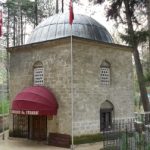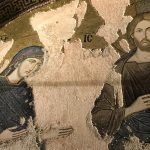All things Ottoman have rarely seemed more fashionable in Turkey. Whether it’s Ottoman motifs in fabrics, Ottoman houses finding new life as boutique hotels or Ottoman-era mosques being given a wash and brush-up, Turkey is now in the throes of a full-blown love affair with its pre-Republican past.
Governing an ever-expanding area of what its now modern Turkey from 1299 onwards, the Ottomans were originally nomads who moved into the vacuum created in Anatolia after the collapse of the Selçuk Empire. Slowly they expanded their grip on the country from bases first at Söğüt and Bursa and then in Edirne until finally in 1453 under Sultan Mehmed II, later known as Fatih Mehmed (Mehmed the Conqueror), they managed to breach the great walls that ringed Constantinople and make the Byzantine capital their own.
From that base Sultan Mehmed (who was only twenty-one when he achieved his goal) imposed his will on the rest of Northern Anatolia. It fell to Sultan Selim I (r.1512-20) to seize most of the rest of what is now the territory of modern Turkey. It’s a story that is recorded in many excellent, readable books in English including Caroline Finkel’s Osman’s Dream and Jason Goodwin’s Lords of the Horizon.
For those in search of the Ottomans İstanbul is far and away the most important place to visit. However, there are also hugely impressive reminders of the early Ottoman period in Bursa and of their 16th-century Golden Age in Edirne. Fine Ottoman mosques can also be visited in Manisa and Amasya, two of the three towns where the sultans’ sons were sent to learn about government, although not, rather surprisingly, in distant Trabzon, the third of the trio and the birthplace of Sultan Süleyman the Magnificent.
Unlike the Selçuks, the Ottomans are sometimes said to have left few physical marks on the Anatolian heartland. That may be true but there are certainly some exceptions particularly around Konya and Kayseri which boast fine early Ottoman-era mosques.
Topkapı Palace, İstanbul
First post of call for Ottoman lovers has to be the Topkapı Palace, the wonderful collection of kiosks and pavilions set in landscaped gardens overlooking the confluence of the Bosphorus and the Golden Horn that provided the centre of government and home to the sultans until 1856 when Sultan Abdülmecid I abandoned it in favour of the Dolmabahçe Palace. You come to Topkapı not just to see where the sultans and their harem lived but also to admire their wonderful jewels and kaftans, their carriages, their weaponry, their portraits, even their cooking pots.
Ayasofya Haseki Hürrem Sultan Hamamı, İstanbul
Near the Palace you can find out what it would have been like to bathe in Ottoman style at the restored Ayasofya Haseki Hürrem Sultan Hamamı, designed by the most famous of all Ottoman architects, Koca Mimar Sinan, for Roxelana, the wife of Süleyman the Magnificent. It’s luxury all the way here although you shouldn’t except your wash to come cheaply.
Süleymaniye Cami, İstanbul
Sinan (c. 1490-1588) stamped his mark all over İstanbul, especially in the shape of its many glorious mosques. The most admired is the one that also dominates the skyline for miles around and that is the Süleymaniye Cami, now restored to its old splendour and well worth visiting not least to understand how the early mosques stood at the heart of a network of social service buildings including schools, hospitals and libraries.
With so many Sinan mosques to choose from (42 in all) everyone will have their particular favourite but others that generally set pulses racing include the small Rüstem Paşa Cami, in the Tahtakale district near the Galata Bridge, and the Sokollu Mehmed Paşa Cami in the back streets of Kadırga, within easy walking distance of Sultanahmet.
Sinan was not just a builder of mosques and bathhouses, and as a break from all the sightseeing you can easily stop off for a Turkish coffee in the pretty little Cafer Ağa Medresesi, the theological school beside Ayasofya that he built in the 1550s.
Blue (Sultanahmet) Cami, İstanbul
Few visitors to Sultanahmet fail to visit the glorious Blue (Sultanahmet) Mosque which was designed by Sedefkar Mehmed Ağa, a pupil of Sinan’s, and was, when it was completed in 1616, unique in having six minarets. Its walls are papered with lovely İznik tiles, one of the handicrafts that flourished in the Ottoman heyday. Try to imagine what it would have looked like in the days when the floor would have been covered with the same sort of glorious carpets as are on display nearby in the Museum of Turkish and Islamic Arts.
Tomb of Ertuğrul Gazi, Söğüt
Heading out of İstanbul for Eskişehir you could pause in Söğüt to inspect the tomb of Ertuğrul Gazi (c.1191-1281), the father of Osman, the first of the Ottoman sultans. His shrine is relatively demure. However, there is a very real sense in which this is where the story of the Ottomans began and every September that fact is commemorated with a huge festival in the arena beside it.
Muradiye Cami, Bursa
Just a quick ferry ride across the Sea of Marmara from İstanbul, Bursa was, from 1326, the first Ottoman capital and is the burial place of the first two sultans, Osman and his son Orhan Gazi, who lie in shrines that were completely rebuilt in 1868.
Bursa is the best place to come to appreciate the evolution of early Ottoman architecture, and there are some lovely mosques to be seen here, including the delicately-tiled Yeşil Cami, built for Sultan Mehmed I in 1424 and the Selçuk-stye Ulu Cami on the high street that is actually an “Ottoman” work, built for Sultan Beyazıd I (r. 1389-1402) in 1396.
Most attractive, though, is the less obvious Muradiye built for Sultan Murad II in 1426. He is buried here in the lovely graveyard along with several crown princes who had been killed by their own relatives in the days before primogeniture decreed which son would succeed his father as sultan.
Selimiye Cami, Edirne
In 1363 Edirne superseded Bursa as the Ottoman capital, and it became the base from which the assault on Constantinople was planned. Even after the conquest, the sultans retained strong links with the city, and Mehmed II spent much of his time at the Edirne Sarayı (Edirne Palace) here rather than in Topkapı.
The palace was deliberately destroyed in 1877, but by then Edirne was home to the stupendous mosque that Sinan regarded as his masterpiece: the Selimiye Cami, built in 1569 for Sultan Selim II. In 2011 it became one of Turkey’s UNESCO-recognised world heritage sites and few visitors could fail to be impressed by the drama of its huge dome – wider even than that of Ayasofya – and the huge windows that allow light to flood the prayer hall.
II. Beyazıd Külleyisi, Edirne
Impressive as the Selimiye is, many people are almost as wowed by the less well-known II. Beyazıd Külliyesi, a mosque complex that was completed for Sultan Beyazıd II in 1488 and now houses a small medical museum. The special beauty of this mosque lies partly in its location in the picturesque water meadows ringing Edirne.
II. Beyazıd Cami, Amasya
Like Bursa, Amasya is home to several fine examples of early Ottoman architecture including the lovely II. Beyazıd Cami, built in 1486 for Sultan Beyazıd II whose grand vizier Hüseyin Ağa was also responsible for the unusual octagonal medrese on the opposite bank of the Yeşilırmak river. Here, as with the Süleymaniye in İstanbul, much of the social complex associated with the mosque still survives, as does its pretty garden.
Muradiye Cami, Manisa
Manisa is home to yet another splendid mosque, the Muradiye built for Sultan Murad III, an ex-governor of Manisa, right in the centre of town in 1586. Designed by Sinan, it was finished off by Sedefkar Mehmed Ağa after his teacher’s death. Internally the mosque is unexpectedly foreshortened but it’s so beautifully decorated with İznik tiles that you’ll hardly notice.
Also worth seeking out:
Kapalı Çarşı (Grand Bazaar), İstanbul (1461)
Büyükçekmece Köprüsü (Büyükçekmece Bridge), İstanbul (1567)
Sultan Selim Cami, Konya (1574)
Kurşunlu Cami, Kayseri (1574)
Sultaniye, Karapınar (1566)
Kurşunlu Cami, Eskişehir (1525)
Rüstem Paşa Bedesteni (covered market), Erzurum (1550)

